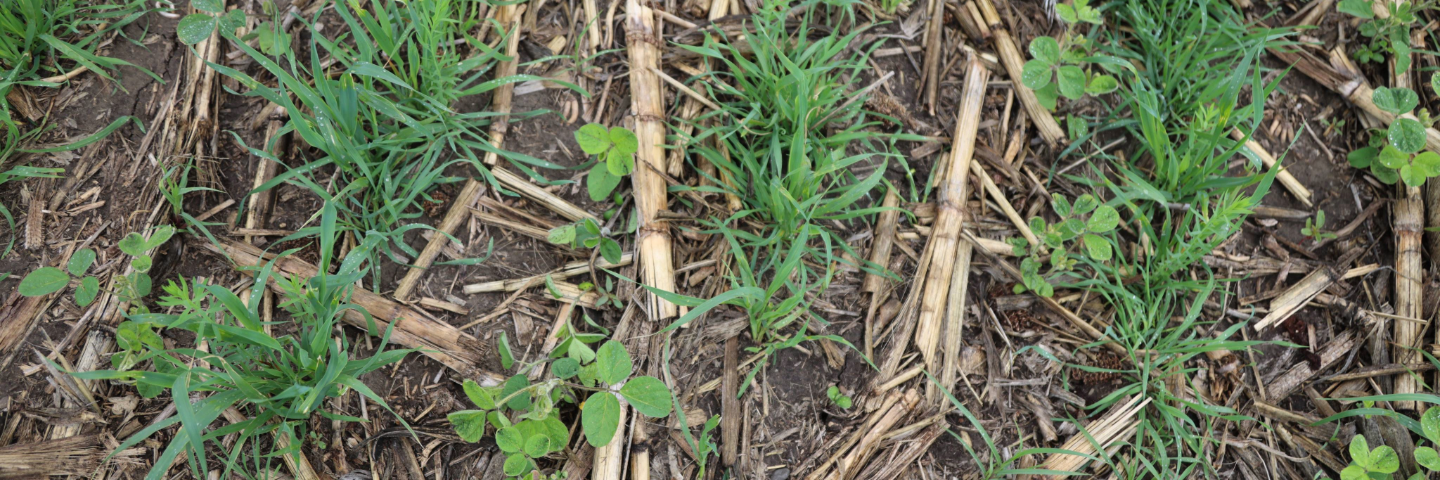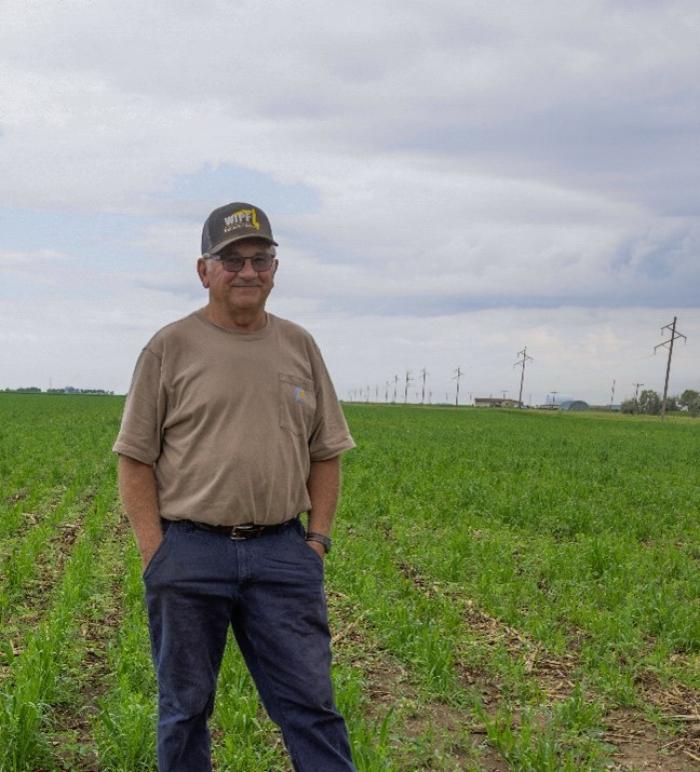Soybeans, Strip Tilling, and Battling Salinity: Adding Acres into Conservation

Standing in his soybean field on a humid June afternoon, Kenroy Wipf shared successes and challenges he has faced while implementing conservation practices when planting soybeans.

Standing in his soybean field on a humid June afternoon, Kenroy Wipf shared successes and challenges he has faced while implementing conservation practices when planting soybeans.
Wipf recently began experimenting with seeding his cash crop and cover crops simultaneously using a two-bin air seeder. This year, on May 3, Wipf planted soybeans, and between those rows he inter-seeded a combination of oats, cereal rye, and flax. Unfortunately, despite never having the issue before, Wipf had to replant the soybeans with a drill due to the unique ground-hardening conditions that occurred this spring. This hard exterior affected the air seeder’s ability to input the seed deep enough into the soil while planting.
Now replanted, growing strong, and nestled between corn stalk residue from the year prior and a cover crop mix, it is now time to give the beans their chance to flourish solo. At this stage in the growing process, the existing cover crops will be terminated so the soybeans can soak up the newly established nutrients in the soil and can be harvested by themselves come fall. This termination chemical treatment for the beans is to kill weeds, volunteer corn, and the cover crops that are in between and around the cash crop rows. After a few days, the unwanted species will turn white which is closely followed by beautiful rows of soybeans.
Kenroy shared that he feels leaving residue on his field is necessary, especially considering the sandy soil that exists in his area, the James River Valley. Another issue that he faces living in this area, which is also an issue in much of South Dakota, is soil salinity. “Do you have any salt issues on some of your acres?” asked an NRCS employee. Wipf replied, “we do, last year we planted a lot of certain grasses—we put those areas out (of production) and put the grasses in because you don’t raise nothing there anyway.”
Outside of the growing season, he typically strip-tills in the fall but when given dry autumn conditions, has also found success with spring strip-tilling. Once soybeans are harvested, Wipf reports he then typically follows up with drilling wheat into the ground, then, a grazing cover crop. Even when fields went ungrazed and perennials died, Kenroy planted directly into the residue and still found success.
When asked by Brookings Field Support Office Agronomist, Eric Barsness, what his primary reason for adopting these practices was, he simply answered, “to get carbon in the ground and the roots… something better for the soil,” – sensible stewardship being the overall echo of his statement. Does this sound like a practice you would like to try? There is free one-on-one consultation for conservation planning available with your local NRCS experts. To locate a service center closest to you, visit https://www.nrcs.usda.gov/state-offices/south-dakota.
USDA is an equal opportunity provider, employer, and lender.

